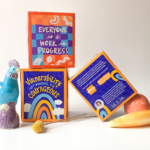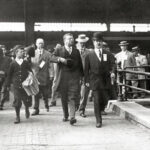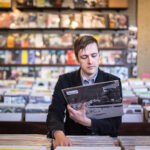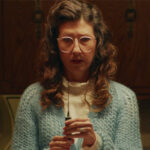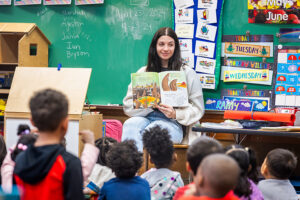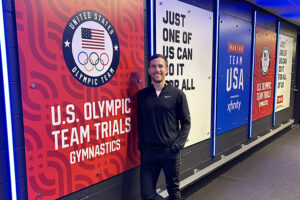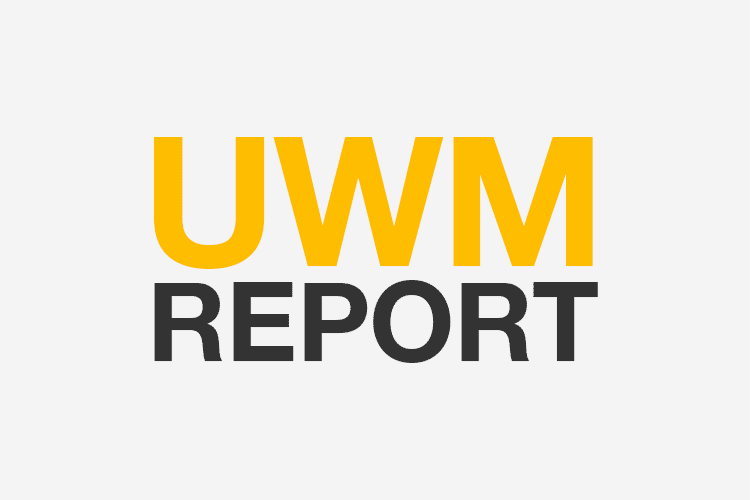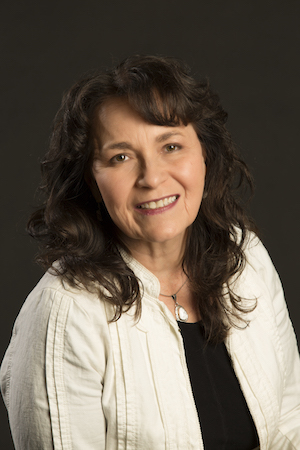
English professor Kimberly Blaeser has been chosen as Wisconsin’s new poet laureate by the Wisconsin Academy of Sciences, Arts & Letters and will serve a two-year term promoting poetry throughout the state.
Blaeser, who has written three poetry collections and had her worked translated into multiple languages, succeeds Max Garland, a professor at University of Wisconsin-Eau Claire. We talked to Blaeser about her poetry and her new position.
How old were you when you got interested in poetry and what sparked your interest?
In my family, poetry, storytelling and a lot of the oral arts were just a part of everyday life. My father could recite poetry at the drop of a hat. If you said the word “alone,” he’d say “alone, alone on the wide, wide sea. And never a saint took pity on my soul.” So, he was quite a poet-recitation person. When I was in grade school, we learned to recite poetry; I wrote very bad poetry my whole life from the time I could write. Our family would use great, long narrative poems as something to pass time on road trips. Poetry has just been part of my life since I was a child.
WATCH: UWM English professor Kimberly Blaeser, who was recently named Wisconsin’s poet laureate for 2015-2016, reads her poem “Refractions (for Bill Harrold).”
View full size on YouTube
What inspires you to write?
I have a wide range. What interests me is what I’m encountering. A lot of my work does arise out of nature, the natural world, animals and the idea of the importance of our relationship with the natural world to a spiritual balance in our life. That’s one whole aspect. And then family poems, poems about women, poems about Native people. A lot of my early work especially focused on giving voice to the experience of Native people for those who did not have the opportunity or the leisure to tell their own story.
How has your Native American background influenced how and what you write?
I think in some ways, especially in my early work, I felt compelled to tell stories that I felt had been overlooked in the history of this country. Particularly, I found great inspiration in my own family, in my community, in the Anishinaabe people of Minnesota and the White Earth Reservation. I wrote out of my own experience, and told family stories and wrote about place, the cycle of the seasons, Native history. Some of those poems were meant to become a kind of corrective to the representations — or misrepresentations in history.
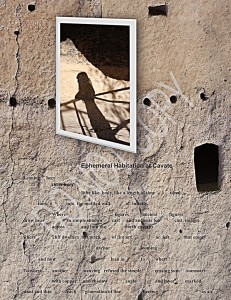
Could you tell us a little about the picto-poems you are working on?
The idea of a picto-poem comes from the Native American pictograph, which is the kind of artwork that you’ll see on rocks or in canyons. You’ll find them in the Great Lakes of Minnesota. I’m working in that tradition because those were images that were tied to story, to myth. I can talk about one so you can get an idea what I mean.
One that was recently published in the Cream City Review issue and will be featured in the book due out in the spring, is called “Ephemeral Habitation at Cavate.” That poem came out of an experience. My daughter and I were hiking in New Mexico in the Bandelier National Park. I wanted her to see the cliff dwellings. We were looking inside a cliff dwelling and on the walls you could see the marks of old fire, you could see a place where the hook had been, where the loom had hung. I had my camera, of course, as we were hiking. Then the light switched for a moment, and it cast my daughter’s shadow onto the cliff dwelling wall. It was long and angular onto that wall. I still get goose bumps because it was such a moment of the present and the past merging.
I took a couple photos. That was the image that inspired the poem that I wrote. When I created the picto-poem, the complete background was the canyon wall which actually has petroglyphs, as they call them there. Then, this is my moment of irony, has a “Do Not Copy” across it. Not everybody gets that. On the page, about a third of the top is that image where my daughter’s shadow is cast onto the cliff dwelling wall, but I’ve angled it so it appears as if she’s looking into this canyon wall.
It’s framed, cropped and angled. And then the text of the poem is laid across the rest of that page. It is a physical poem in the sense that the language is spaced in certain ways so that it also is a visual, meant to convey part of that message. Those are the layers of that poem.
What does it mean to you to become Wisconsin’s poet laureate?
We just have this rich resource of poets in Wisconsin, so to be selected, first of all, is just humbling and an honor. But I’m very excited because I have ideas about what I’d like to do to celebrate the poets we have, and also to engage the public more in poetry.
What do you hope to accomplish in the role? Do you have some specific projects in mind?
I have a couple very specific projects, and then I have some other quirky ideas. I’d like to have a monthly feature on a radio show of an interview with a Wisconsin poet so that over this two-year period of time we would get to know more Wisconsin poets. There might be a handful that people are familiar with, but there are so many that are quite dynamite in our state.
The other bigger project I’d like to undertake … I would like to just highlight all of the poets of Wisconsin by putting together an anthology.
Then, along the way, I have crazy ideas about bringing poetry into public spaces in new ways. … I was with a group of friends at a conference, and we went to a sushi place where they had little sushi boats that went around. What we did just for fun was write one line of haiku and put it on the boat. Someone else would pull that off and write another line and put it back on until we had the three lines of haiku. What happened was the other people in the restaurant started taking these off and participating. I just think there’s a hunger in our public for poetry, poetry that is playful and fun and doesn’t seem inaccessible to them. Somehow part of what I would like to do is bring poetry into unlikely places.
